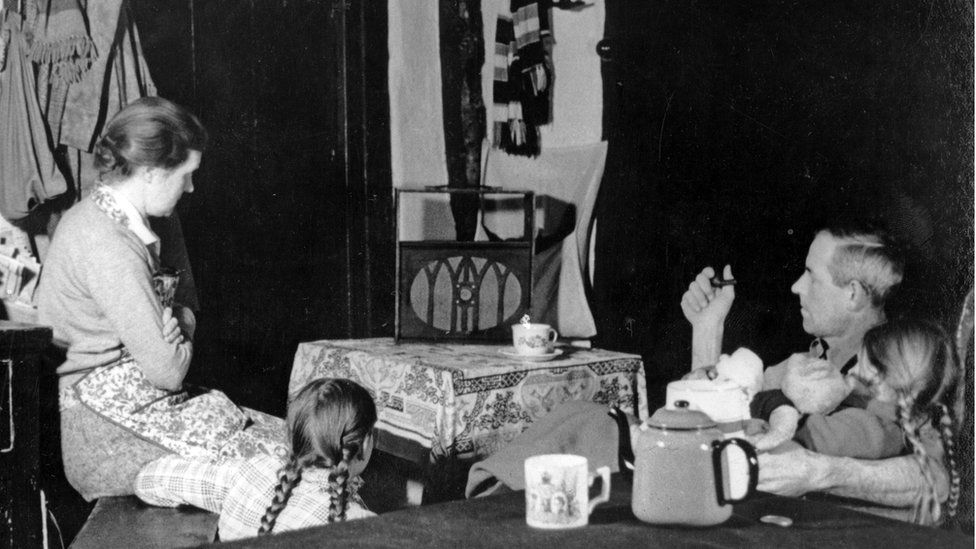'There is no news': What a change from 1930 to today
- Published

It's getting harder to remember what a slow news day looked like.
But 87 years ago, on 18 April 1930, the BBC's news announcer had nothing to communicate. "There is no news," was the script of the 20:45 news bulletin, before piano music was played for the rest of the 15-minute segment.
The wireless service then returned to broadcasting from the Queen's Hall in Langham Place, London, where the Wagner opera Parsifal was being performed.
How different 18 April 2017 has looked.
It has been packed with news.
As people up and down the UK went back to their jobs following the Easter long weekend, speculation built around an announcement that the Prime Minister, Theresa May, would be making just after 11:00.
The press and broadcasters, unusually, had been kept in the dark about the subject - so there was plenty of speculation all over Twitter and other social networks.
When Mrs May said she sought to call a snap general election, in less than eight weeks' time, it was immediately the subject of online articles, analysis pieces, live news pages, radio bulletins and programmes, TV commentaries, and more - all accessible by smartphone.
Perhaps you're more interested in news from outside the UK, in which case we give you pictures of a new Russian military base in the Arctic; the aftermath of a failed missile launch as North Korea keeps accelerating its nuclear programme; a major candidate in the upcoming French election pledging to suspend immigration; and calls for Turkey to investigate its own election process after a "Yes" vote in a referendum that would give the president sweeping new powers.
None of those are fluff stories for sure.
These days, the BBC has more staff and more capacity than it did in 1930. But it also has a different definition of what the news is.
Then, it was very dependent on news agencies and official government announcements. Today, less so.
And in other changes; back then, announcers were anonymous, and they wore dinner jackets to work.
This was out of respect for the music and drama performers, who had to dress up to entertain in the evening.
- Published18 April 2017
- Published18 April 2017